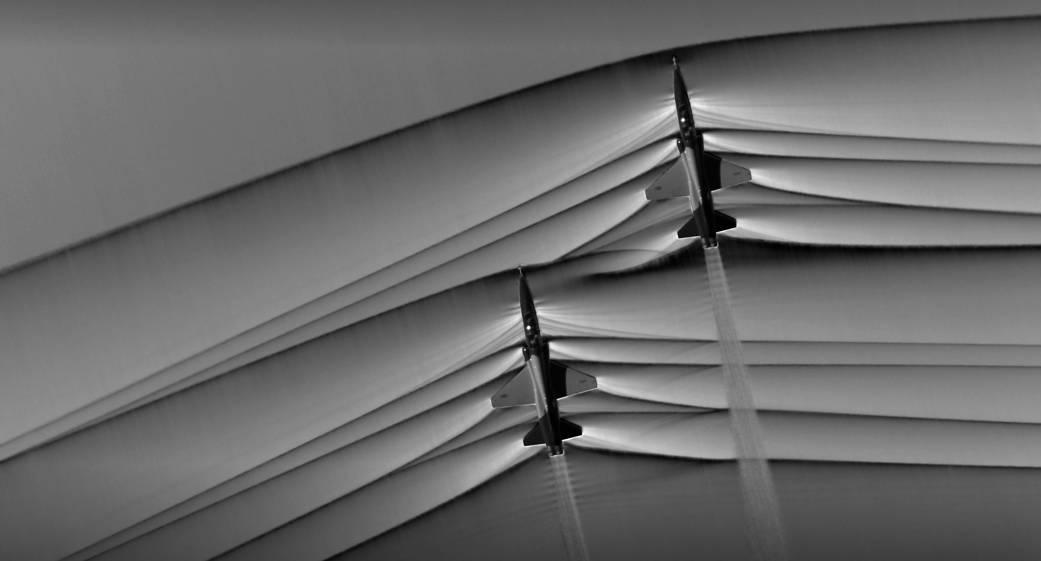
Using the schlieren photography technique, NASA was able to capture the first air-to-air images of the interaction of shockwaves from two supersonic aircraft flying in formation. These two U.S. Air Force Test Pilot School T-38 aircraft are flying in formation, approximately 30 feet apart, at supersonic speeds, or faster than the speed of sound, producing shockwaves that are typically heard on the ground as a sonic boom. This image was captured during the fourth phase of the Air-to-Air Background Oriented Schlieren flights, or AirBOS which took place at NASA’s Armstrong Flight Research Center in Edwards, California. These flights were flown, in part, to better understand how shocks interact with aircraft plumes, as well as with each other.
Read more about AirBOS Phase 4 flight tests.
February 2019
























